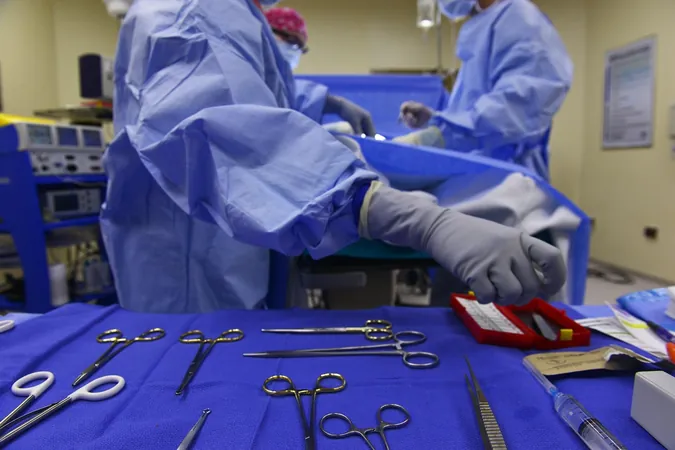
How Canada Can Slash Wait Times for Hip and Knee Replacement Surgeries
2025-05-20
Author: Siti
Transforming Healthcare: The Urgent Need for Change
Imagine suffering from unbearable joint pain while being forced to wait months or even years for the relief of hip and knee replacement surgeries. Unfortunately, this is the reality for many Canadians. However, new research published in the Canadian Medical Association Journal shines a light on promising solutions that could dramatically reduce these exhausting wait times.
The Alarming State of Wait Times
Canada's healthcare system is notorious for its long wait times, particularly for scheduled surgeries like hip and knee replacements. Patients often face worsening pain and mobility issues, leading to a decline in overall health and quality of life. In international comparisons, Canada lags significantly behind, raising alarm bells among healthcare advocates.
Innovative Solutions on the Horizon
To tackle this pressing issue, some provinces have explored the privatization of certain surgeries, but experts are advocating for alternative approaches that could prove more effective. Dr. David Urbach, a renowned surgeon and professor at the University of Toronto, emphasizes the potential of coordinated referral models and team-based care. These strategies could not only expedite surgical wait times but also address geographic and socioeconomic disparities that impact patients differently.
Research Breakdown: Which Model Works Best?
In a groundbreaking study, researchers analyzed three distinct models of care to find the most efficient way to expedite surgeries. The study involved a comprehensive dataset, examining 17,465 surgeries across various regions in Ontario, taking into account referrals from over 7,700 physicians and the involvement of 274 surgeons.
The Three Models Explained
1. **Single-Entry Referral Model**: This central intake system pools patients from various regions, allowing them to queue for consultations with specialists. 2. **Team-Based Care**: Here, patients enter a regional pool after their initial consultation, subsequently queuing for surgery within their region. 3. **Fully Integrated Model**: Patients are pooled for both consultation and surgery queues, ensuring they see the next available surgeon in their area.
The Verdict: Team-Based and Integrated Models Win!
The study revealed that both the team-based and fully integrated care models significantly outperformed the single-entry approach, leading to much shorter wait times. However, Dr. Urbach warns that the benefits of these innovative care models need better quantification to gain traction among policymakers and healthcare authorities, who often face pushback from stakeholders within the health system.
A Call to Action for Policymakers
As the demand for hip and knee replacements continues to rise, it is crucial for Canadian healthcare leaders to champion these efficient models of care. By prioritizing patient-centered approaches, we could not only enhance accessibility to essential surgeries but also improve the overall health of Canadians. The time to act is now!


 Brasil (PT)
Brasil (PT)
 Canada (EN)
Canada (EN)
 Chile (ES)
Chile (ES)
 Česko (CS)
Česko (CS)
 대한민국 (KO)
대한민국 (KO)
 España (ES)
España (ES)
 France (FR)
France (FR)
 Hong Kong (EN)
Hong Kong (EN)
 Italia (IT)
Italia (IT)
 日本 (JA)
日本 (JA)
 Magyarország (HU)
Magyarország (HU)
 Norge (NO)
Norge (NO)
 Polska (PL)
Polska (PL)
 Schweiz (DE)
Schweiz (DE)
 Singapore (EN)
Singapore (EN)
 Sverige (SV)
Sverige (SV)
 Suomi (FI)
Suomi (FI)
 Türkiye (TR)
Türkiye (TR)
 الإمارات العربية المتحدة (AR)
الإمارات العربية المتحدة (AR)